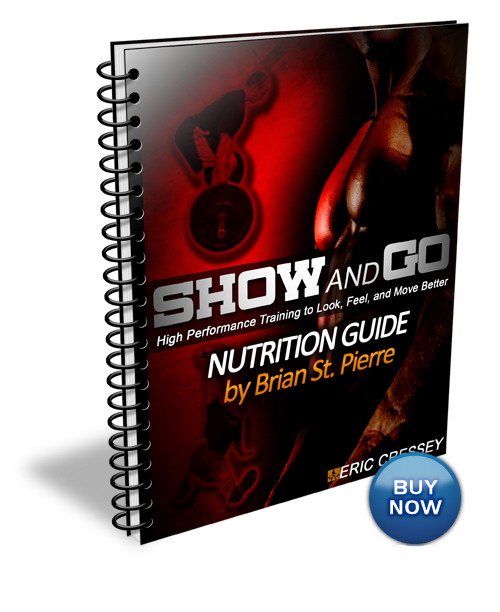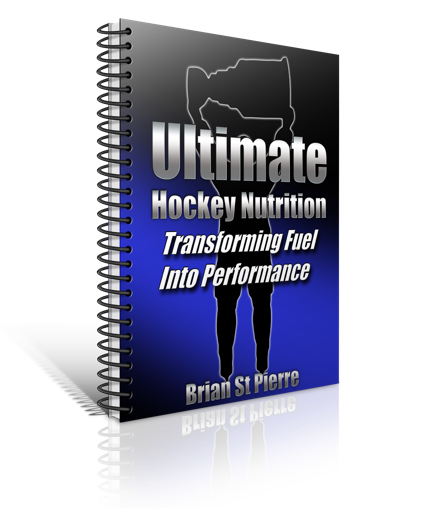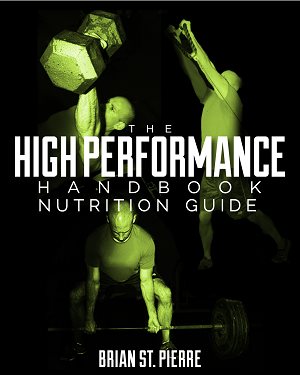How to Decrease High Blood Pressure
Filed under: General Health, Nutrition, Training, Weight Loss
I know I have been talking about Tim Collins a lot this week, but it is a truly amazing story. EC and Pete flew out to Kansas City to see him on Opening Day yesterday, and lo and behold Timmy got to pitch the 9th inning. While KC lost 4-2, Timmy threw 19 pitches, 10 for strikes leading to 1 hit, 1 walk, 1 strikeout and 0 runs. Not too shabby for a 21 year old kid huh?
I also hope that those of you not living in the Northeast are loving life right now, as up here in Augusta, Maine we are projected to get 8-14 inches of heavy, wet snow today! Awesome! I love shoveling.
Anyway, onto actual nutrition content.
Jonny Bowden had a recent article called Foods to Fight High Blood Pressure that I thought was excellent overall. However I feel that there were a few important points that were left unsaid that I wanted to touch on and expand on the topic a bit. To truly get the most out of this post, I recommend you read that one first, though I will provide a small recap:
- Approximately 1 in 3 US adults has high blood pressure, and 25% of them don’t even know it
- High blood pressure is directly responsible for over 56,000 US deaths each year
- The research generally shows that excess sodium in our diets contributes to high blood pressure for many
- While cutting back sodium can help, consuming more potassium can be just as effective for managing blood pressure
- In fact increasing potassium intake without decreasing sodium will still improve blood pressure
- Here is the list JB provides on potassium containing foods:

- Swiss Chard – 961 mg per cup
- Bananas – 422 mg in one medium banana
- Spinach – 839 mg per cup
- OJ – 496 mg per cup
- Dried apricots – 550 mg per 1/4th cup (1 serving)
- Sweet potatoes – 542 mg per medium sweet potato
- Avocados – CA variety – 690 mg per, FL variety – 1067 mg per
- Cantaloupe – 368 mg in 1/4 of a medium cantaloupe
- Figs – 381 mg per half cup
- Peaches – 322 mg in one large peach
- Beans – 477-1224 mg per cup
- Kale – 299 mg per cup
- Some other foods lower blood pressure by other mechanisms such as celery, garlic, beet juice, whey protein powder and vitamin D.
Now my two cents.
While the research has been a little inconclusive, on the whole POM wonderful pomegranate juice has been found to significantly lower blood pressure in people with hypertension. In fact daily consumption was able to lower systolic blood pressure by as much as 20%, along with increasing blood flow to the heart, reducing arterial plaque and more. For prevention purposes 2oz per day should be sufficient, if you have high blood pressure already 4-6oz might be warranted. It should also be pointed out that 8oz of POM juice contains 600 mg of potassium.
If you know a thing or two about potassium, you will notice one of the best food sources in the world missing from that above list. If you google best sources of potassium you still won’t find it very easily. It seems no one wants to give credit where credit is due, but the humble potato contains a whopping 926 mg of potassium in one medium potato! This much-maligned food deserves its place among the potassium heavy weights and it drives me nuts how it never gets mentioned.

While this last food is mentioned based more on potential than absolute fact, there is some data to back this up. I am talking about the delicious Rooibos tea. A recent study looked at green, black and rooibos tea on angiotensin-converting enzyme (ACE). Angiotensin-converting enzyme has two main functions: converting angiotensin I to angiotensin II and to degrade bradykinin. This is a problem because angiotensin II constricts blood vessels and bradykinin relaxes blood vessels.
As such ACE inhibition is a goal in the treatment of high blood pressure (among other things). However the drugs that accomplish this have TONS of side effects – hypotension, hyperkalemia, kidney impairment and more.
This study had patients drink 400ml (just over 13oz) of green, black or rooibos tea once daily. It then monitored ACE activity for up to 3 hours after consumption.
It was found that green tea and especially rooibos tea significantly inhibited ACE activity. While this does not definitely show that consumption of green and rooibos tea can be used to replace ACE inhibitors, it does show that they might help in the treatment of high blood pressure and can be used as part of a dietary intervention before putting someone on powerful ACE inhibitors.
More research is needed to see how much this ACE inhibition actually contributes long-term benefits, but the results are promising none the less.

Also failing to mention that minimizing processed food intake will drastically reduce your sodium intake would be a big miscue on my part. Focusing on consuming mostly real, whole, minimally processed foods will decrease sodium intake and increase potassium intake all by itself.
Lastly it is important to mention that exercise and weight loss are two of the best methods for decreasing blood pressure. This I can tell you from experience. At one point in time I maintained my body weight between 210 and almost 220. I am 5’10″, so to say I was thick is an understatement. I certainly wasn’t fat or even chubby, but I wasn’t ripped either. I felt that was my best playing weight for rugby, so I lifted a ton and ate my face off, with healthy food, just mountains of it.
My blood pressure was always on the high side, up around 130/65 (that is a pulse pressure of 65, which is not a good thing). It didn’t help that I was always worried that my blood pressure would be high, so I would get nervous when the doctor would measure me (like white-coat syndrome) and this would artificially inflate it a bit as well. Regardless, it was higher than it should have been.
Fast forward to more recent times where I maintain a bodyweight between 190-200, and my blood pressure is a spectacular 108/72 (pulse pressure a beautiful 36). Granted I think my diet has improved since my 215 days, but not to the point where it would make all of the difference. I also wasn’t exercising any more than I had been either, so that wasn’t the cause. It was mostly my weight loss, which just goes to show how powerful of a tool that can be.
I also had my central blood pressure measured by a SphygmoCor assessment, which was really neat. Normal blood pressure cuffs measure your brachial (or peripheral) blood pressure. SphygmoCor utilizes that data, and then measures your central (or aortic) pressure. Basically the blood pressure actually at your heart. Mine was 94/73, pretty much straight up awesome. This central blood pressure is a better predictor of cardiovascular events than traditional peripheral blood pressure, and SphygmoCor is being used by the prestigious Mayo Clinic, among many others.
For those interested, here is a video from the Mayo Clinic about the SphygmoCor system.
So to wrap this all up, the best way to manage blood pressure is to exercise, maintain a healthy weight, eat a diet rich in real, whole, minimally processed foods containing plenty of high-potassium fruits and vegetables as well maybe drinking a little POM juice every day, consuming some celery, having a scoop of whey protein every day, optimizing your vitamin D status and drinking some green and rooibos tea. If you read this blog on a consistent basis, that shouldn’t be too daunting of a challenge!
Check out the BSP Training & Nutrition Newsletter!
You will get immediate access to:
- Weekly updates and exclusive content.
- The 20-page report "The Truth About Saturated Fat & Cholesterol."
- Become more awesome!
Posted on April 1st, 2011 by Brian St. Pierre
2 Comments




April 1st, 2011 at 9:43 am
Great article, Brian!
April 5th, 2011 at 11:00 am
Thanks Cass!
Those Sphygmocor numbers are from when you measured me!